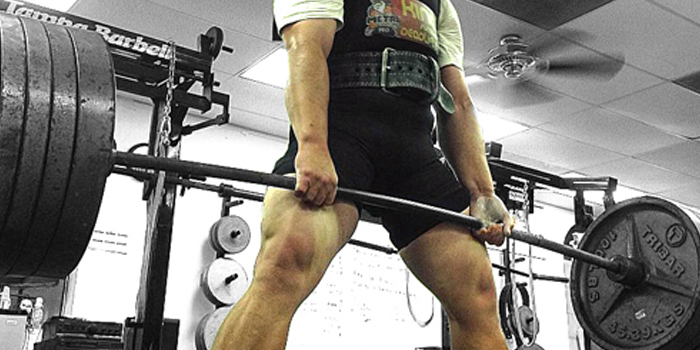
The last time I wrote about my programming for the team I coach, I discussed the starting point that we had to our off-season using a low dosing approach. The results of this were very satisfactory, and I stated that I would discuss where we would go next. As of writing this, our true off-season period has concluded, and we will start into spring football. In this article, I'll provide more insight into the team, discuss some of the general ideas of what we did and give some of the results of what came out of our testing.
The Team
I teach and coach at an inner city school in Tampa, Florida. We play in one of the more competitive districts in our class, which is the 6A (with the highest class in Florida being 8A). The talent level in 6A is generally deeper than the classes above because there is a greater number of teams in each district. However, FHSAA rules dictate that regardless of the number of teams in a district, only two will be given a playoff birth. In the four seasons that I've coached here, we've been a playoff team for three and a district champion for one. Even in our non-playoff year, we had seven wins. We usually win nine to 10 games a season and run a fairly successful program year in and year out. We just lack the depth that other teams may have to make runs deep into the state playoffs.
Our strengths as a team influenced my programming. Far too often, we see people talking about addressing weak points and trying to use the off-season to correct them. On paper, if someone looked at our team, he may say that we lack size up front and are undersized. We don't have many true offensive linemen and are usually converting players from other positions to play in these areas. However, in the past three years, we ran an up-tempo, spread offense that thrives on athleticism as opposed to smash mouth styles of football relying on size and strength. While we have a new coordinator, this will be no different. Defensively, we play an aggressive, odd front scheme and, at times, are in stacked alignments to create pressures and use blitz packages from multiple angles. Again, we use athleticism and find ways to use our best players to our advantage.
When considering our strengths from that angle, I considered what we needed to do to play our game rather than take the conventional approach and think size and strength. This influenced my programming, as did positional requirements and the level of the players.
Basic Setup
With the days, I had utilized a split that designated our intensive field work and lifts on two days of the week alternated with our extensive field work and weight room exercises. On our intensive days, we performed a conservative volume of sprinting, jumping, squatting and bench pressing. On our extensive days, I used tempo runs or positional work of low intensity, extensive jumps and bounds and a large complex of exercises that were along the lines of the 1 X 20 programming from previous blocks. In these blocks, I began to slowly use more specialized exercises for sprint mechanics and cutting (i.e. knee drive, pawbacks, calf raises, lateral lunges with horizontal tension). Other exercises on this day were more general in nature. There weren't any sets done for more than one set on this day. I'll give the basic outlines of the different blocks and what made up the contents of each. Understand that this is what was done with the players who were ready for it. Those who weren't followed more rudimentary programming.
Block 4: This block was three weeks in length. In this block, we utilized a conservative volume of short sprints and focused on alactic power and correct spring form. We used full recoveries between attempts and attempted to teach players how to put together the skills they had acquired through using the specialized exercises. As far as distances, the yardage ranged from 5–30 yards per rep. Linemen rarely performed anything over 15 yards while big skill usually went only to 20 yards and small skill did reps out to 30 yards. However, we emphasized acceleration for all groups and did a fair amount of work in the 5- to 20-yard range for each group.
For intensive jumps, we performed single response broad jumps on a hill for the first three intensive sessions and transitioned to threefold jumps on the hill for athletes that were ready. Again, the volume was kept conservative. Skill players also performed dumbbell squat jumps with an iso-dynamic regime. In the weight room, iso-dynamic squats were performed with varying weights determined by the amount of external resistance in relation to position group. Small skill groups performed these with 70–75 percent of a 6RM, big skill groups used 80–85 percent of a 6RM and linemen performed these with 85–100 percent of a 6RM. Bench pressing was performed with one day featuring weights at 80–90 percent of the 3RM weight. On extensive days, tempo runs ranging from 60–100 yards were performed with the distance determined by position group. Skill players performed long bounds of submaximal effort. Linemen performed submaximal effort sled pushes with light weights and focused on technique.
Block 5: This block lasted two weeks in length. Intensive days had two different setups, with the first having sled pushes and sprints for linemen and the second consisting of all sled pushes. Linemen also performed broad jumps of single response on this day. Skill players performed sprints followed by squat jumps and broad jumps of either fivefold (small) or threefold (big) variety. On this day, both groups squatted, with skill players using time as the regulator for the duration of the set (6–10 seconds) with two positions of knee flexion (135 and 90 degrees) both for 3–5 seconds each in a set. Linemen performed regular squats for sets of 2–3 reps with 90–110 percent of their 6RM, designated by technical proficiency. The amount of sets of squats was 2–3. Both groups bench pressed with percentages ranging from 90–100 percent of the 3RM.
On the second intensive day of each week, linemen performed all lower body work through sled pushes of both heavy and moderate weights. Skill players performed two different types of jumps, one weighted and the other a threefold or fivefold jump, depending on positional group. On extensive days, skill players performed multi-directional positional drills of submaximal intensity followed by lateral jumps of submaximal intensity. Linemen performed submaximal sled pushes with light weight followed by submaximal tire fight drills to teach pass block sets. Weight room work was a large complex of low intensity exercises that fit into both specialized and general categories. All were performed for one set each.
Outcomes
At the conclusion of the program, we had solid gains across the board for most players. When performing some side-by-side comparisons of players who completed pre-testing and then the brief post-testing, we had the following.
In December, only three players ran the 10-yard split in 1.59 seconds or faster. In April, 13 players were able to do this. This also included a 1.46 by one of our defensive backs who was in the 1.6s in December. We also had multiple players floating around the 1.6–1.65 range who were nowhere near this in December, including an offensive/defensive lineman.
In December, we had only eight players who could perform a broad jump (i.e. standing long jump of eight feet or more). In April, we had 23 players who could accomplish this, including two who had gone over nine feet and one who had gone over 10 feet. This also included the offensive/defensive lineman referenced above.
In December, we had only 12 players able to perform a threefold broad jump of 25 feet or more. In April, we had 25 players accomplishing this, with several hitting 28 feet or more and two who were closing in on the 30-feet range.
These weren't the only tests that I used, but these were the results that jumped out the most to me. Our 20- and 40-yard dash times also improved in a proportionate manner, but I feel that the 40 is one of the most overrated tests, so I really don’t take much stock in what it means. All these times were hand-timed, which I know is far from official. Feel free to do the math to make this whatever it would be with FAT, but I'm looking at improvement from one period to the next, which was timed exactly the same in both evaluations.
Strength numbers also increased, as was noted in the previous article. I didn't test squats because I'm really not interested in finding maxes and I can tell through observing the training sessions that we're stronger. In our bench pressing, I had them take a one-rep max at the conclusion of our final week. Multiple players hit big PRs, and the average increases far exceeded approaches that I had used in the past. This was with much less intensity or time in general spent performing squats and bench presses. However, we were also able to improve in other areas that are more important for on-the-field performance as opposed to just getting “big and strong.”
Thoughts
This year, we spent a fraction of the time in the weight room or on the field compared to what was done in previous years. Our training this year was much more directed and efficient. Additionally, the training also was more appropriate for the level of the athletes, which led to more technically sound performance of the drills used. While there are things that I'll likely change and reevaluate as we move into our summer program, I'm happy with the results of our training. I'll be interested to see how this pays off as we move into spring football because we have trained toward our needs and strengths as a team as opposed to focusing on what we don’t have. As coaches of physical preparation, we need to take a look at what positional coaches do at times. Coaches game plan and design their offenses and defenses around the talent they have. At times, on our end, we focus so much on what a player may not have that we neglect the abilities they do display. We can do our part by objectively viewing what qualities may have a great trainability and enhancing the natural abilities of the athletes we work with.















"On our extensive days, I used tempo runs or positional work of low intensity, extensive jumps and bounds and a large complex of exercises that were along the lines of the 1 X 20 programming from previous blocks. In these blocks, I began to slowly use more specialized exercises for sprint mechanics and cutting (i.e. knee drive, pawbacks, calf raises, lateral lunges with horizontal tension)"
Great stuff.
Thanks for the kind words. I will give you a skeleton outline of the extensive days to show you how I implemented these principles. This is for our skill players.
1) AD Warmup - Nothing out of the ordinary here but it was changed around on a block or even weekly basis depending on what the focus of the sessions were.
2) Extensive field work - Early on, this was tempo runs that were in the range of 80 - 100 yds. Toward the end, this became multi-directional work using lateral movements such as side shuffling or side running as well as backpedaling. In the case of the lateral movements, I used time as a factor and had the drill last the same time as what the tempo runs were designated at.
3) Extensive jumps - These featured both double leg bounding of submaximal intensity and lateral bag jumps of submaximal intensity. In the case of the bounds, I used distance as opposed to reps and had the athletes go forty yards but instructed them that they should feel relaxed while performing this and not be attempting to reach maximal distance on each jump.
4) Strength work - This was a workout that featured anywhere from 10 - 20 exercises using the low dosing protocol. Some were general, some were more specialized as described above. As we progressed, certain movements were phased out. On this day, I also included some low intensity, bodybuilding type accessories as well as calisthenics in this complex. Not everything was done with 1 x 20 as the protocol. On many movements, technical failure may have dictated the stopping point (this is especially true on the specialized movements). Quarterbacks also performed specialized movements on this day that were directed toward throwing abilities. However, these were still of low intensity.
Let me know if this clears anything up.